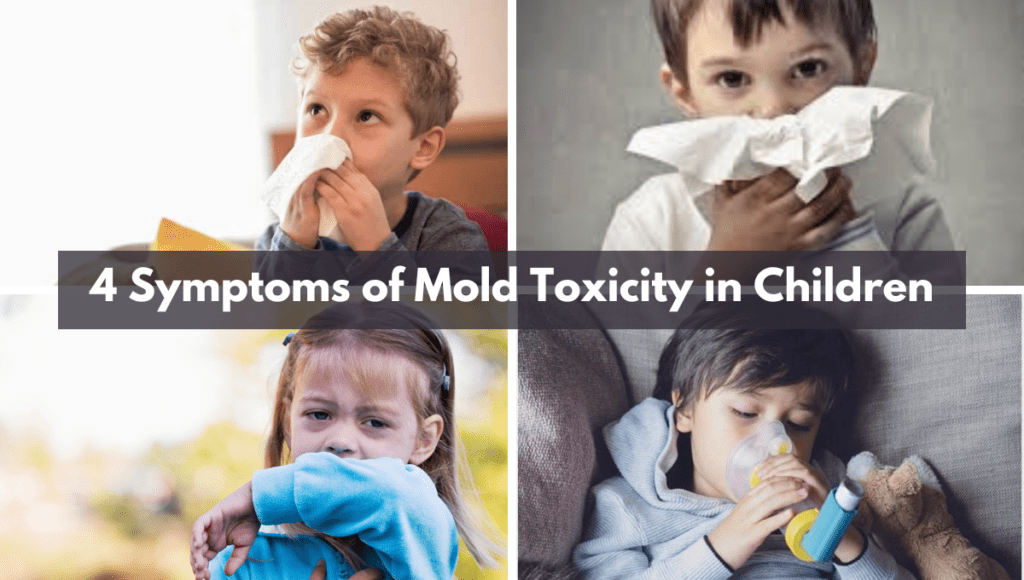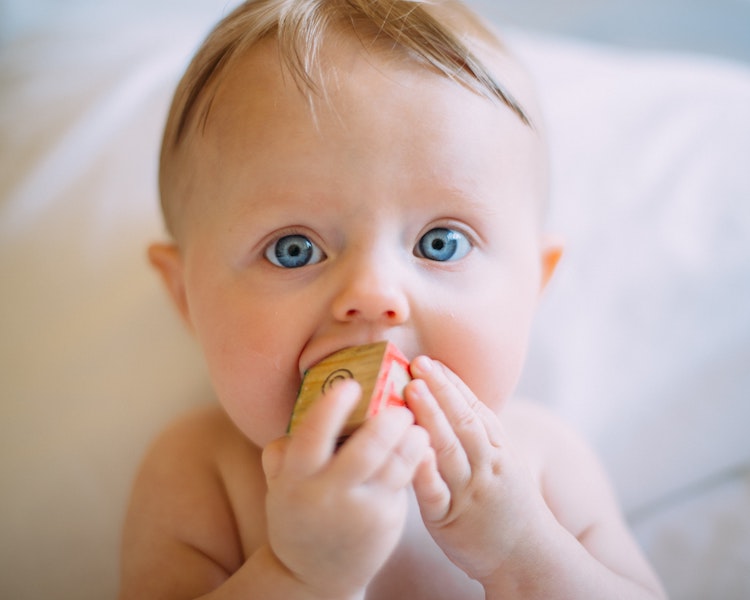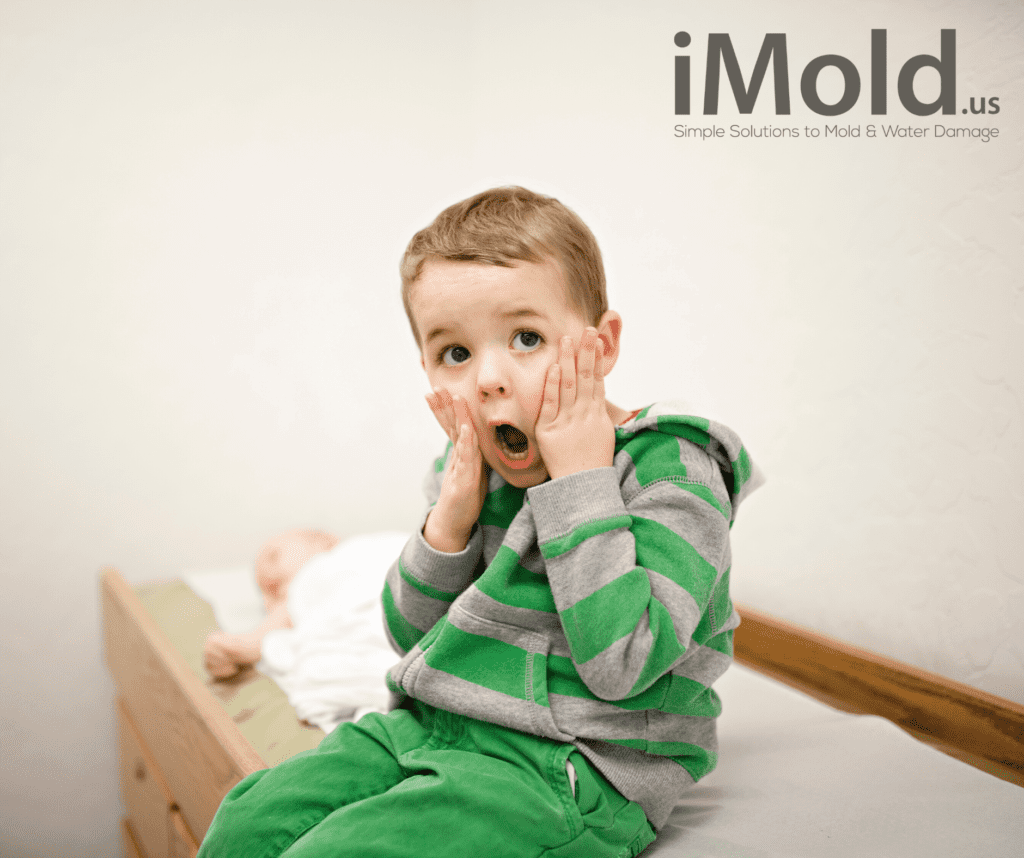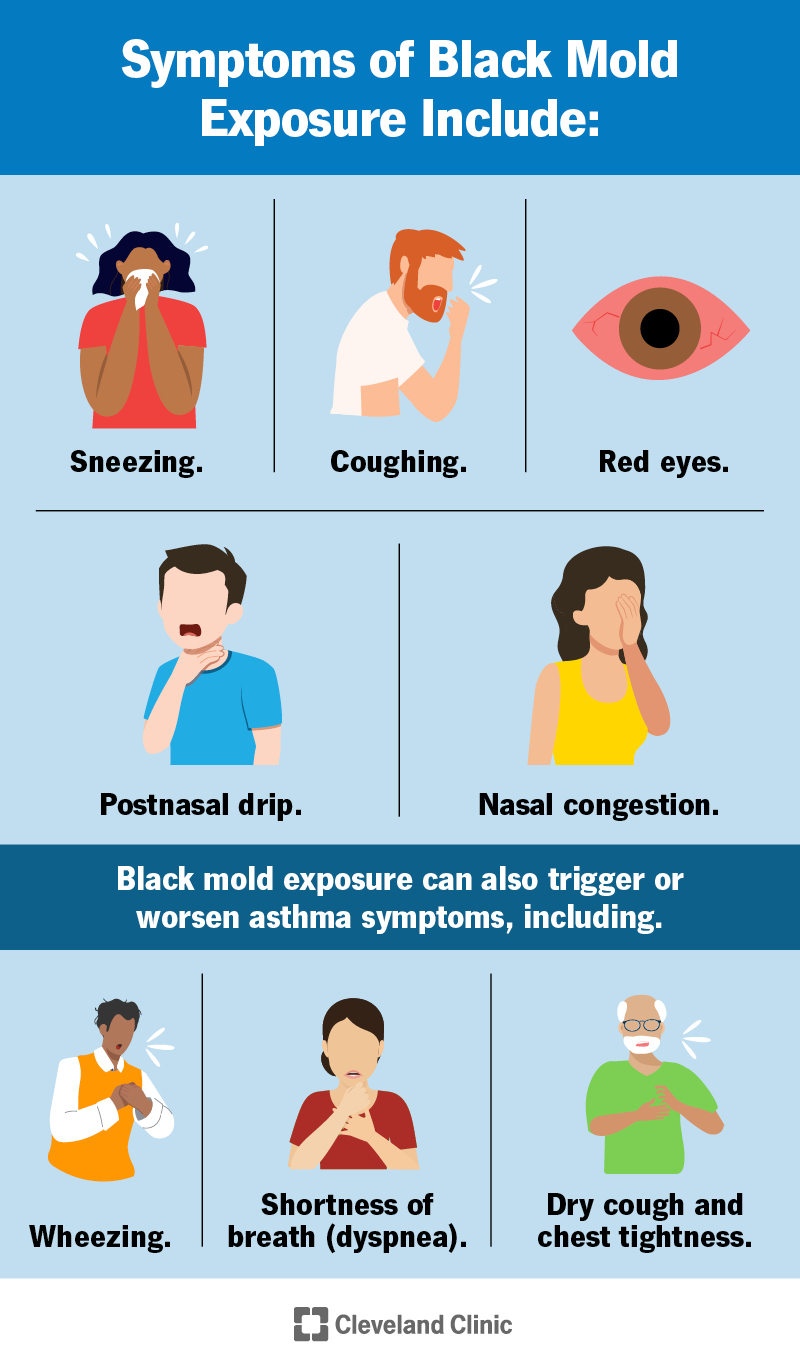In this article, we will discuss the symptoms of black mold exposure in babies and why it is important to protect your little ones. You will learn about the potential health risks that black mold can pose to infants and the signs to look out for. We will also provide some practical tips on how to prevent black mold growth in your home and safeguard your baby’s health. By the end of this article, you will have a better understanding of the dangers of black mold and the steps you can take to keep your little ones safe.

What is Black Mold?
Black mold, also known as Stachybotrys chartarum, is a type of toxic mold that can infest homes and buildings. It is characterized by its black or dark green appearance and thrives in damp and humid environments. Black mold releases mycotoxins, which can be harmful to humans and pets when inhaled or touched. Exposure to black mold can have severe health consequences, especially for babies and young children.
Definition of Black Mold
Black mold refers to a specific strain of mold that produces mycotoxins. These mycotoxins are poisonous substances that can cause a range of health problems in individuals exposed to them. Black mold needs moisture and a food source, such as wood, paper, or drywall, to grow and thrive. It typically appears as black or dark green patches and can emit a musty odor.
Causes of Black Mold
Black mold thrives in environments with excessive moisture. The primary causes of black mold growth in homes include:
- Water leaks: Pipe leaks, roof leaks, or plumbing issues can create an ideal breeding ground for black mold.
- High humidity: Areas with high humidity, such as bathrooms, basements, or poorly ventilated spaces, provide the perfect conditions for black mold to proliferate.
- Condensation: Poor insulation or lack of ventilation can lead to condensation on surfaces, promoting black mold growth.
Preventing or addressing these causes is vital to protect your home and, especially, your little ones from black mold exposure.
Symptoms of Black Mold Exposure
Exposure to black mold can cause various symptoms in both adults and children, including babies. It is crucial to recognize these symptoms early on to seek appropriate medical attention. The symptoms of black mold exposure in babies can be categorized into respiratory symptoms, skin symptoms, digestive symptoms, and neurological symptoms.
Respiratory Symptoms
When exposed to black mold, babies can experience respiratory issues such as:
- Wheezing and coughing: Black mold spores can irritate the respiratory system, leading to persistent coughing and wheezing.
- Nasal congestion: Babies exposed to black mold may have a chronically stuffy or runny nose.
- Difficulty breathing: Severe exposure to black mold can cause difficulty breathing, shortness of breath, or asthma-like symptoms.
Skin Symptoms
Babies with black mold exposure may also exhibit skin problems such as:
- Rashes: Red, itchy, or irritated skin may develop due to direct contact with black mold or mycotoxins.
- Eczema flare-ups: Babies with existing eczema may experience increased rashes and itchiness when exposed to black mold.
Digestive Symptoms
Black mold exposure can affect the digestive system of infants, leading to:
- Nausea and vomiting: Ingesting food or objects contaminated with black mold can cause nausea and vomiting in babies.
- Diarrhea: Black mold ingestion can also result in diarrhea or loose stools.
Neurological Symptoms
In some cases, black mold exposure can impact the neurological system of babies, resulting in:
- Irritability and mood swings: Babies exposed to black mold may become increasingly irritable, fussy, or experience sudden changes in mood.
- Developmental delays: Prolonged exposure to black mold and its toxins may contribute to developmental delays in infants.
Recognizing these symptoms is crucial in protecting the health and well-being of your little ones.
Effects of Black Mold on Babies
The effects of black mold exposure on babies can be severe and long-lasting. It is important to understand how black mold can impact their health to take appropriate action in preventing or mitigating exposure.
Respiratory Issues
Babies exposed to black mold are at a higher risk of developing respiratory problems. Prolonged exposure can contribute to the development of asthma, chronic bronchitis, or other respiratory conditions. These respiratory issues can significantly impact their quality of life and may require ongoing medical intervention.
Allergies and Asthma
Black mold exposure can trigger allergies and exacerbate existing asthma symptoms in babies. The presence of black mold in the home can lead to increased sensitivity to other allergens, such as dust mites or pet dander, which can further worsen respiratory symptoms. Babies with a family history of allergies or asthma are particularly susceptible.
Skin Problems
Direct contact with black mold or mycotoxins can cause various skin problems in babies. Rashes, hives, or eczema flare-ups may occur, leading to discomfort and itchiness. Continuous exposure to black mold can aggravate these skin conditions and make them more difficult to manage.
Infections
Babies with weakened immune systems are particularly vulnerable to infections caused by black mold exposure. Black mold spores can enter the body through inhalation or ingestion, leading to respiratory infections, sinusitis, or even more severe systemic infections. Prompt medical attention is necessary to treat and prevent the spread of these infections.
Neurological Disorders
Black mold exposure has been linked to an increased risk of neurological disorders in infants. Prolonged exposure during critical developmental stages can hinder cognitive development and lead to learning disabilities or behavioral problems later in life. Identifying and addressing black mold exposure in babies is crucial to minimize the risk of long-term neurological consequences.
Identifying Black Mold in Your Home
Identifying the presence of black mold in your home is essential to protect your little ones from exposure. Black mold can hide in various areas and may not always be visible to the naked eye. Here are some ways to identify black mold in your home:
Visual Clues
Inspect your home for any visible signs of black mold, such as black or dark green patches. Check areas prone to moisture, such as bathrooms, basements, or areas affected by water leaks. Pay attention to discolored walls, ceilings, or surfaces that appear damp or have a musty smell.
Musty Odor
Black mold often emits a distinct musty odor. If you notice a persistent musty smell in certain areas of your home, it could be an indication of black mold growth. Investigate the source of the odor and take necessary action to address it.
Testing for Black Mold
If you suspect black mold but cannot identify it visually, you may opt to have your home professionally tested. Mold testing kits or professionals can collect samples and analyze them to determine if black mold or other types of mold are present. This can provide valuable information in assessing the extent of the issue and guiding remediation efforts.

Preventing Black Mold in Your Home
Taking proactive measures to prevent black mold growth in your home is essential for the health and safety of your little ones. Here are some steps you can take to minimize the risk of black mold infestation:
Controlling Moisture
Black mold thrives in damp environments, so controlling moisture is crucial. Repair any water leaks promptly, ensure proper ventilation in areas prone to moisture, and use dehumidifiers in humid climates or areas with high humidity levels. Regularly inspect and maintain plumbing systems to prevent leaks and water damage.
Proper Ventilation
Ensure proper ventilation in bathrooms, kitchens, and other areas where moisture is generated. Use exhaust fans or open windows to allow moisture to escape and prevent the buildup of humidity. Proper ventilation helps keep the air circulating and reduces the risk of mold growth.
Regular Inspections
Perform regular inspections of your home to identify and address any areas of concern. Check for signs of water damage, roof leaks, or plumbing issues. Regularly inspect areas with high moisture levels, such as basements, crawl spaces, or areas affected by condensation.
Steps to Take if Your Baby is Exposed
If you suspect or confirm that your baby has been exposed to black mold, it is important to take immediate action to protect their health. Here are some steps you can take:
Seek Medical Attention
Contact your pediatrician or healthcare provider to discuss your concerns and seek medical advice. Describe the symptoms your baby is experiencing and share any information about potential black mold exposure. Medical professionals can provide appropriate guidance based on your baby’s specific situation.
Remove or Remediate Mold
If black mold is visible and present in your home, it is essential to remove or remediate it. Depending on the extent of the mold growth, you may be able to tackle it yourself by following safety guidelines, such as wearing protective gear and using appropriate cleaning products. However, in more severe cases, it is advisable to hire professional mold remediation experts to ensure thorough and safe removal.
Clean and Disinfect Affected Areas
Once the mold has been removed or remediated, it is crucial to clean and disinfect the affected areas. Use appropriate cleaning products and techniques recommended for mold removal. Thoroughly clean any items, toys, or surfaces that may have been in contact with black mold or its spores.

Tips for Protecting Your Little Ones
Taking proactive measures to protect your little ones from black mold exposure is essential for their health and well-being. Here are some tips to help minimize the risk:
Maintain Clean Indoor Environment
Regularly clean and dust your home to minimize the presence of allergens, including mold spores. Pay attention to areas prone to moisture and regularly check for signs of mold growth or water damage.
Avoid Damp and Moldy Areas
Keep your baby away from areas with visible mold growth or excessive moisture. If you suspect mold in certain areas of your home, restrict your baby’s access until the issue is resolved.
Regularly Clean Baby’s Toys and Accessories
Regularly clean and sanitize your baby’s toys, accessories, and surfaces they frequently come into contact with. This includes pacifiers, teething toys, play mats, and high chairs. Use appropriate cleaning solutions to ensure thorough disinfection.
Health Risks Associated with Black Mold in Babies
Exposure to black mold can pose significant health risks to babies. Understanding these risks can help parents and caregivers take appropriate measures to protect their little ones.
Respiratory Problems
Babies exposed to black mold are at an increased risk of developing respiratory problems, including asthma, bronchitis, or frequent respiratory infections. These respiratory issues can lead to difficulties in breathing, coughing, wheezing, and reduced lung function.
Allergic Reactions
Black mold exposure can trigger allergic reactions in babies. Symptoms can include sneezing, runny or stuffy nose, itchy and watery eyes, and skin rashes. Babies with a family history of allergies or asthma may be more susceptible to these allergic reactions.
Weakened Immune System
Black mold exposure can weaken a baby’s immune system, making them more susceptible to infections. Babies with compromised immune systems are at a higher risk of developing respiratory infections, sinus infections, or systemic infections caused by black mold exposure.
Developmental Issues
Prolonged exposure to black mold and its toxins can potentially impact a baby’s neurodevelopment. Babies may experience developmental delays, learning disabilities, or behavioral problems as a result.

Seeking Professional Help
In cases of severe black mold growth or ongoing health issues related to black mold exposure, it is advisable to seek professional help. Consulting a pediatrician and hiring mold remediation experts can provide specialized guidance and ensure the safety and well-being of your little ones.
Consulting a Pediatrician
If you suspect or confirm black mold exposure in your baby, consulting a pediatrician is essential. They can evaluate your baby’s symptoms, provide appropriate medical advice, and guide you in taking necessary steps to protect their health.
Hiring Mold Remediation Experts
When dealing with extensive black mold growth or situations where professional expertise is required, hiring mold remediation experts is recommended. These professionals have the knowledge, tools, and experience to safely remove black mold and restore a healthy environment for your family.
Conclusion
Recognizing and addressing black mold exposure in babies is of utmost importance for their health and well-being. Understanding the symptoms, effects, and health risks associated with black mold can empower parents and caregivers to take proactive measures to protect their little ones. By implementing preventive measures, seeking medical attention when necessary, and taking appropriate action to remove or remediate black mold, you can safeguard your baby’s health and create a safe and healthy home environment. Remember, early recognition and proactive measures are key to protecting your little ones from the harmful effects of black mold exposure.
